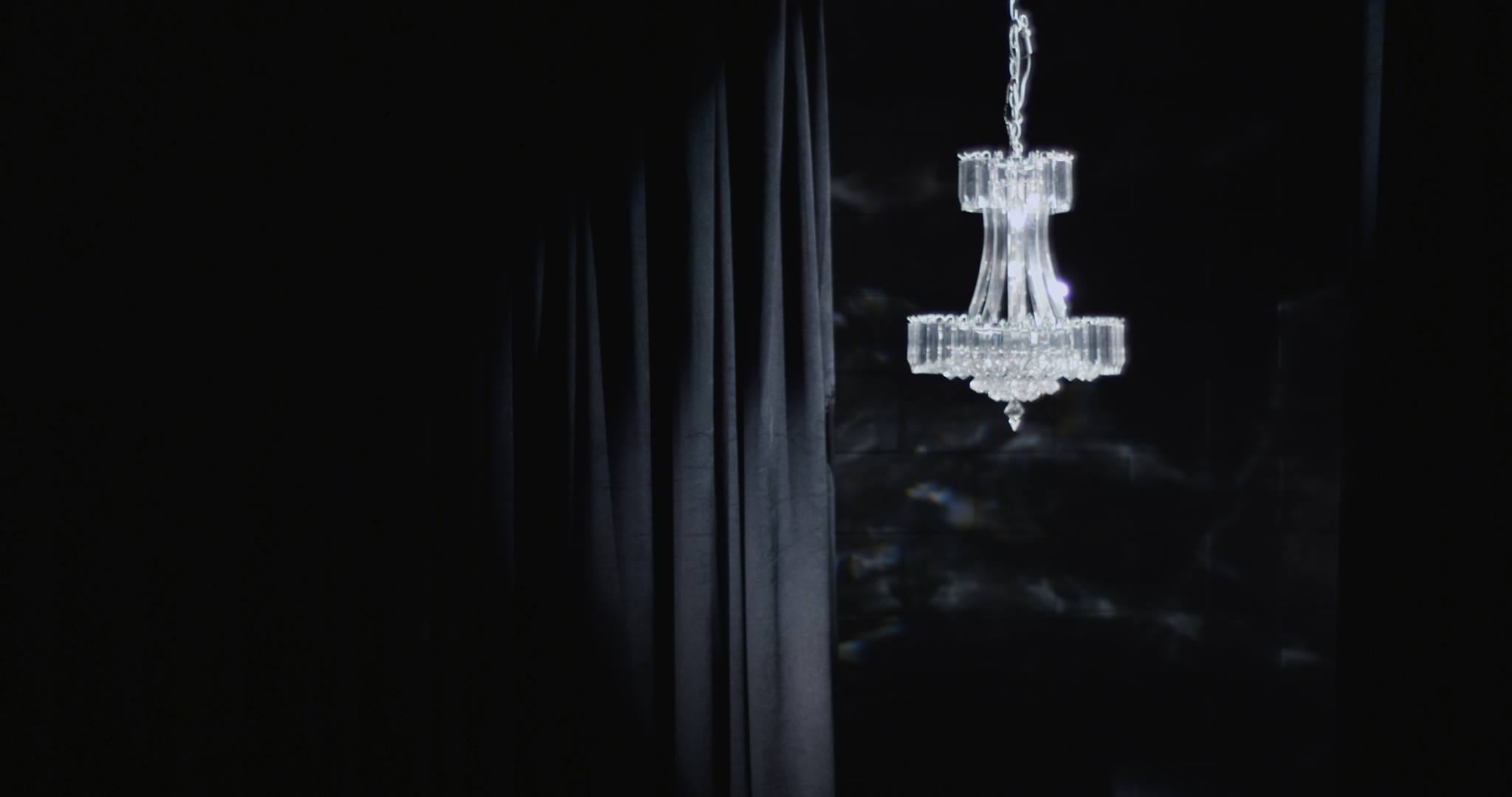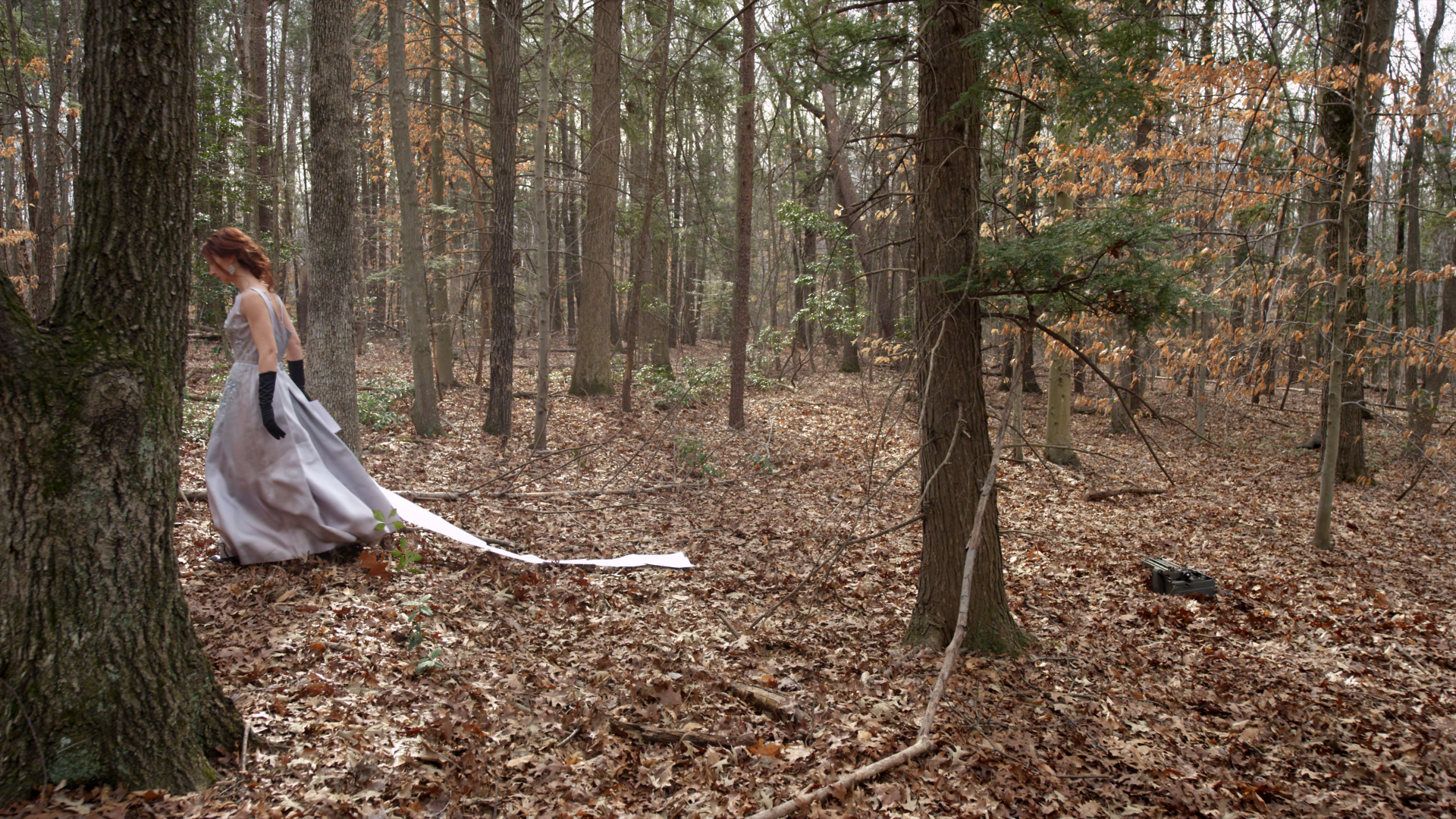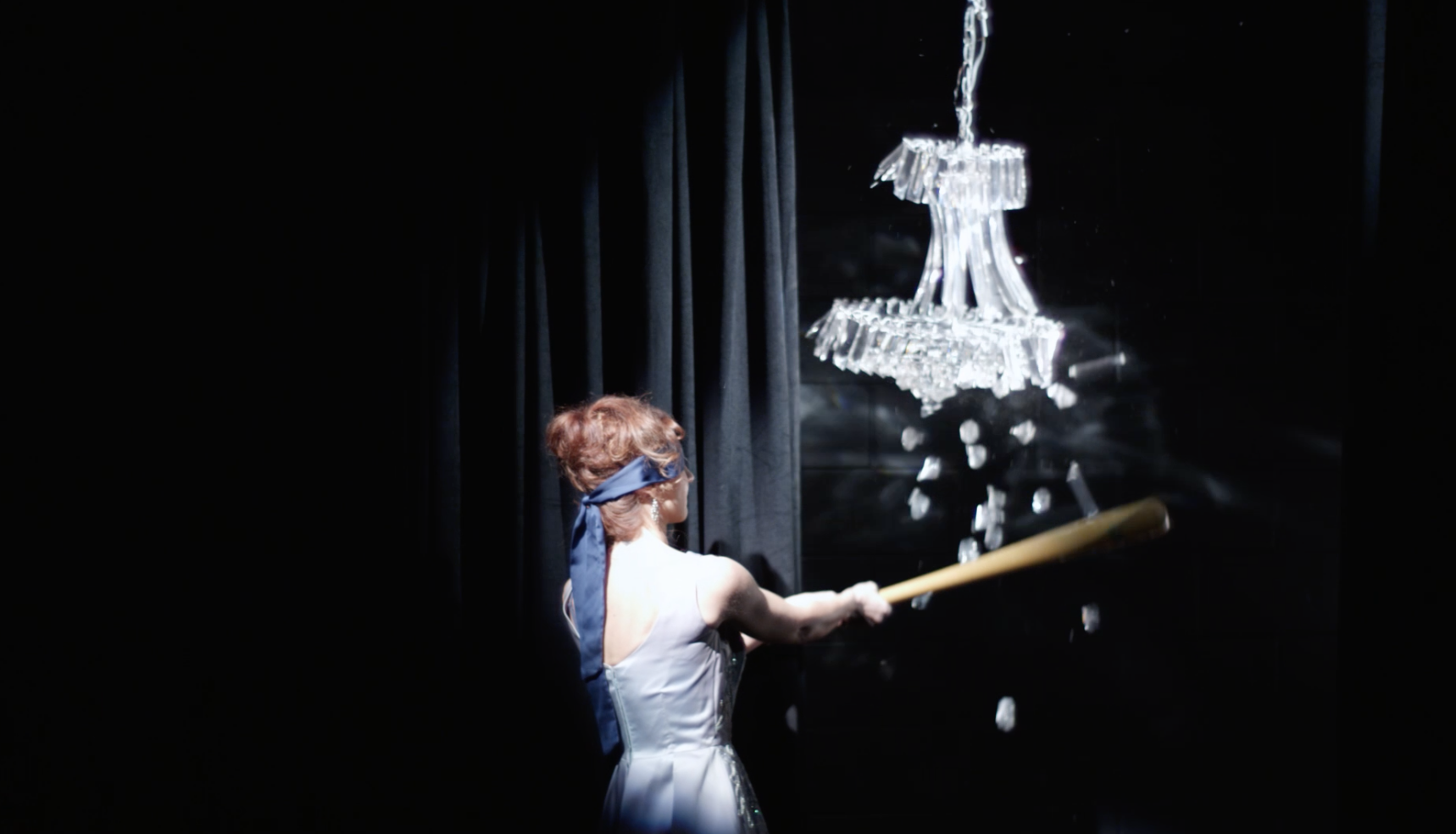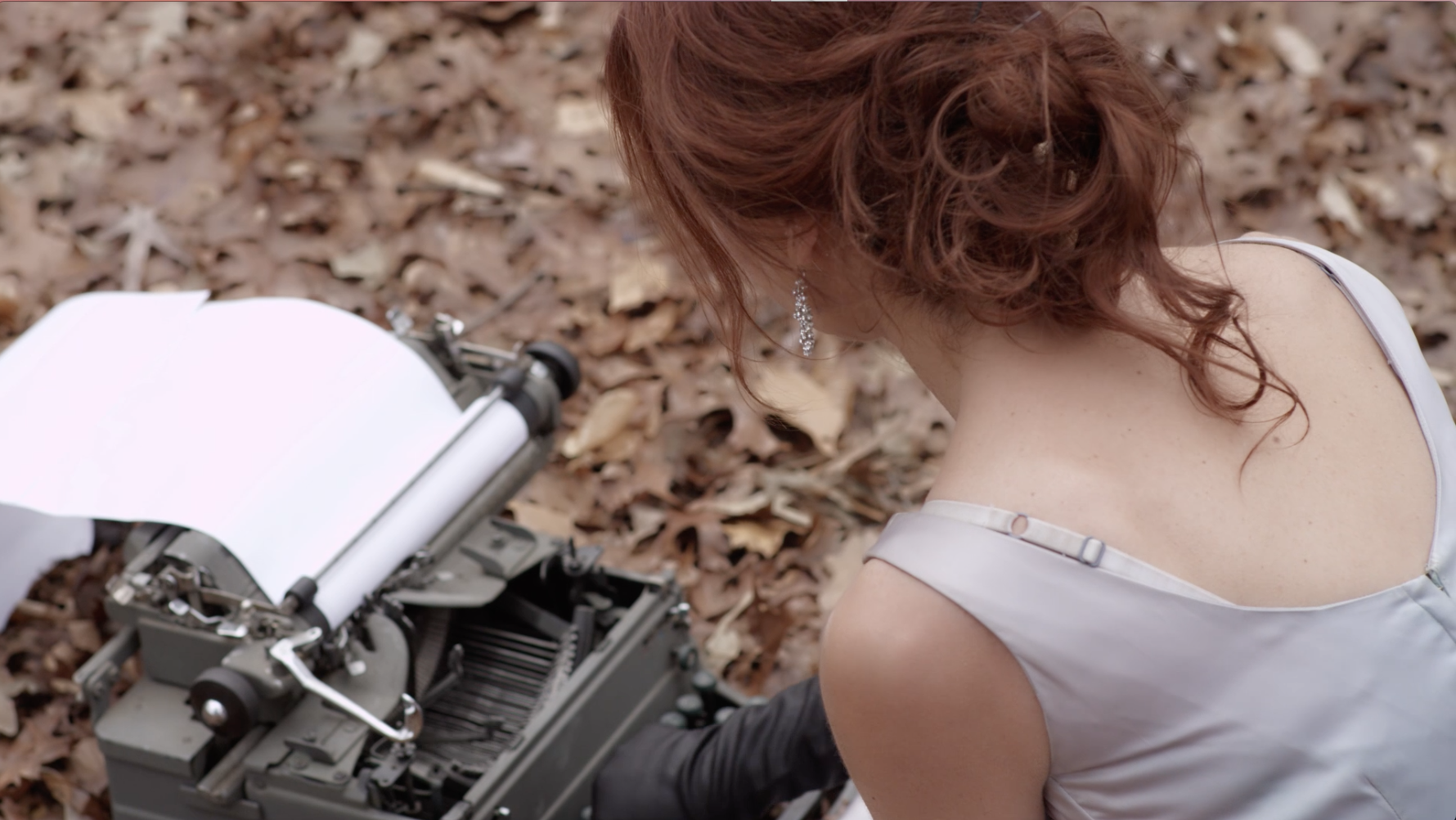Mnemosyne, 2016
video performance, Epic Red film, 4:29
To read the interview with Women Cinemakers, click here.
Mnemosyne is the epilogue to the muse trilogy that examined Hortense Fiquet Cézanne, Jeanne Hebutérne, and Musa McKim. Though Mnemosyne's focus is Victorine Meurent, it is named for the Greek goddess of memory, who was also the mother of the nine muses. Often depicted holding the lantern or light of memory, the broken chandelier alludes to moving away from the past, while an obvious homage is made to Meurent with the reference to the iconic painting for which she sat, Luncheon on the Grass. If Mnemosyne alludes to the muse's ability to call upon memory as an important element of creativity, Meurent is the ultimate example of the woman reduced to static image, her own biography completely lost. The thread of the narrative belongs to Mnemosyne, Meurent, and the artist as muse to herself simultaneously.
Victorine Meurent is likely the most famous nude in the history of Western painting. Although she and Edouard Manet are not known to have been intimate, she appears as the model for nine of his paintings during a pivotal shift in his artistic direction. Born to a working class family in one of the poorest areas of Paris, Meurent was a street musician and fortunate to acquire work modeling for artists when becoming a courtesan would have been the highest station she could have aspired. Since she was not Manet’s mistress, and her position in his paintings went beyond portraiture to a central figure in his new, innovative approach to realist scenes, it is in theory as easy to imagine Meurent and Manet as inventive collaborators. The bourgeois Manet was captivated by the independent, street smart eighteen-year-old, and she came to represent the gritty realism of Paris that he was attempting to capture.
For thirteen years, Meurent was the model to some of Manet’s greatest works, which are also among the most important turning points in Modern art. But little is known about Meurent after about 1890. There is record of the exhibition of her own paintings in the annual salons, but only one – a small portrait – survives. Although her image is iconic, it is likely that the most famous nude died in poverty. The “muse” to Manet’s intellect, she did not fall prey to the emotional prettification of a beloved subject; although little is known about her, she was ironically the source for the process of visualizing and celebrating the real over the ideal.








Mnemosyne
